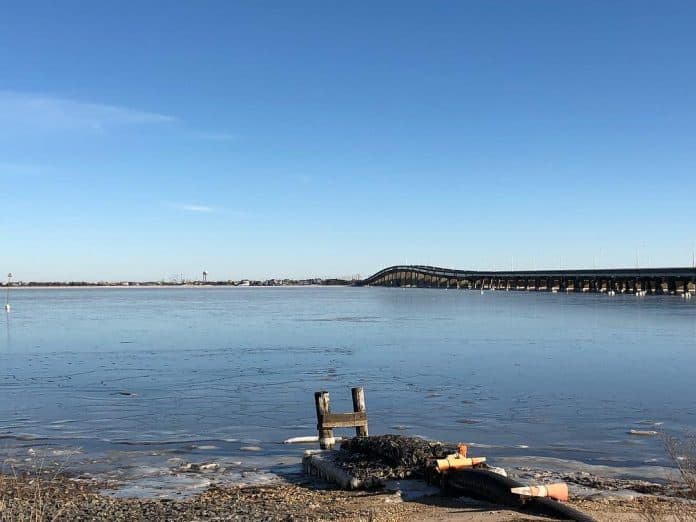
JERSEY SHORE – Temperatures are on the rise now, but the entire state was blasted with arctic air Jan. 20-22. Thankfully, much of the rain had stopped and cleared that Sunday by the time that cold front moved in Monmouth and Ocean counties, which brought with its rapidly plummeting temperatures a flash freeze, when water freezes so quickly ice crystals don’t have time to form. Temperatures barely climbed out of the teens Monday (Martin Luther King Jr. Day), although the roads were clear to drive on.
The biggest story to come out of that weather, besides the weather itself, was a rescue that took place Monday in Rumson. Four duck hunters took a small boat out to an island on the Navesink. Three made it back to shore, but the man’s boat – not designed to handle the below-zero air and wind chill temperatures and 34-degree water – broke down. He had to be rescued by Coast Guard crews that came in from Sandy Hook and Atlantic City.
Though ice wasn’t named as a factor in his stranding or rescue, the fact is that lake and pond surfaces have frozen over, probably prompting a few brave souls to sling a pair of ice skates over a shoulder and think about a hydrant lift or death spiral.
But is the ice thick enough?
The Ocean County Park System doesn’t have any lake or pond ice rinks. Monmouth County has three – Holmdel, Shark River, and Turkey Swamp – that are open to the public when, generally, there’s been 10 consecutive days of subfreezing temperatures and the ice is 5 inches thick. Those parks post “skating today” signs so visitors know it’s safe to skate.
“So far this year, ice skating has not been safe at any Monmouth County Park. During the winter season, the rangers report to us safety conditions and when the ice is ready for skating, it will be announced on the Park System website and through social media. Also, each park will post a sign to let visitors know if the ice is safe,” Monmouth County Park System spokeswoman Karen Livingstone said. “If a visitor attempts to walk on the ice, a park ranger with tell them to get off.”
Livingstone clarified further that when temperatures are below 30 degrees, the lake or pond ice must be at least 4 inches thick. When temperatures hover between 30-40 degrees, the ice must be at least 5 inches thick for skaters to use.
Authorities agree that no one should attempt to venture out on ice that’s less than 3 inches thick. Although going out on ice always carries some risks – ice depth may not be consistent throughout, so experts warn skaters and others to stay away from unknown spots – it’s generally considered safe for skating at 4 inches for skaters, 5 inches for snowmobiles, 12 inches for a car or small pickup truck, and 15 inches for a medium truck. Those numbers apply to lake and pond ice, or ice that is solid, clear, or blue/black.
One illustration shows 100 inches thickness being safe for Godzilla. Good to know.






